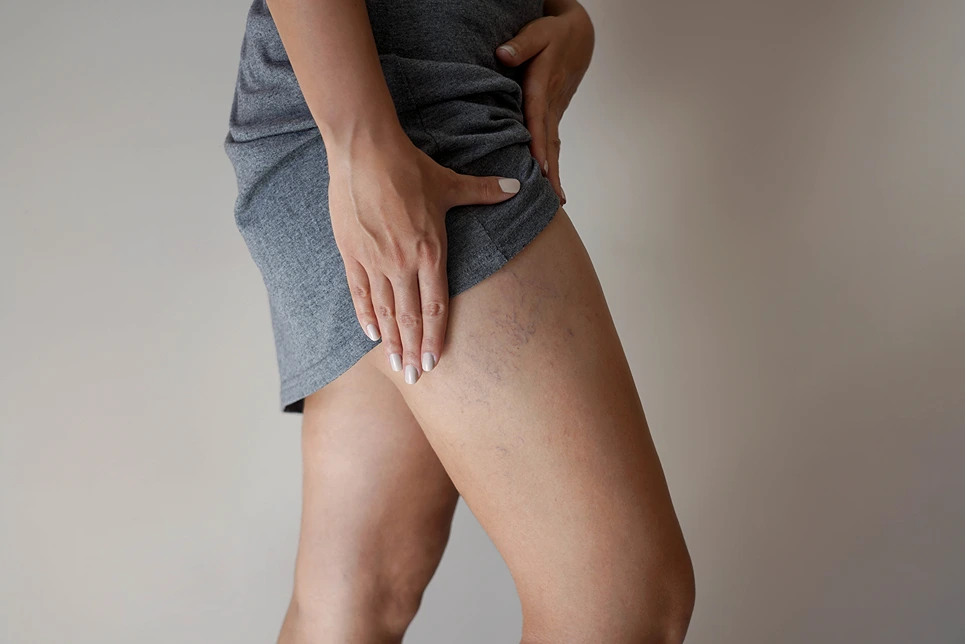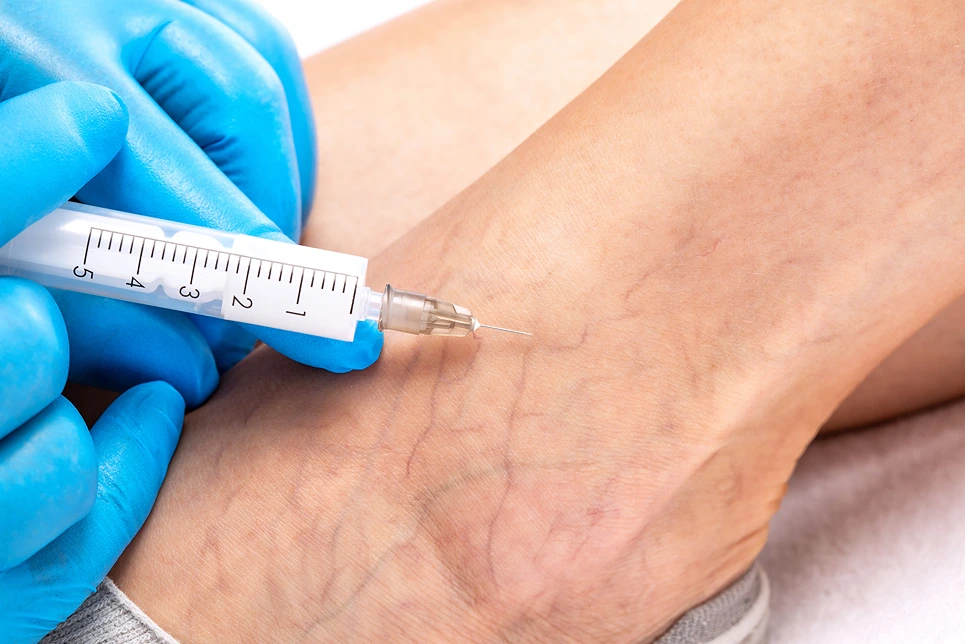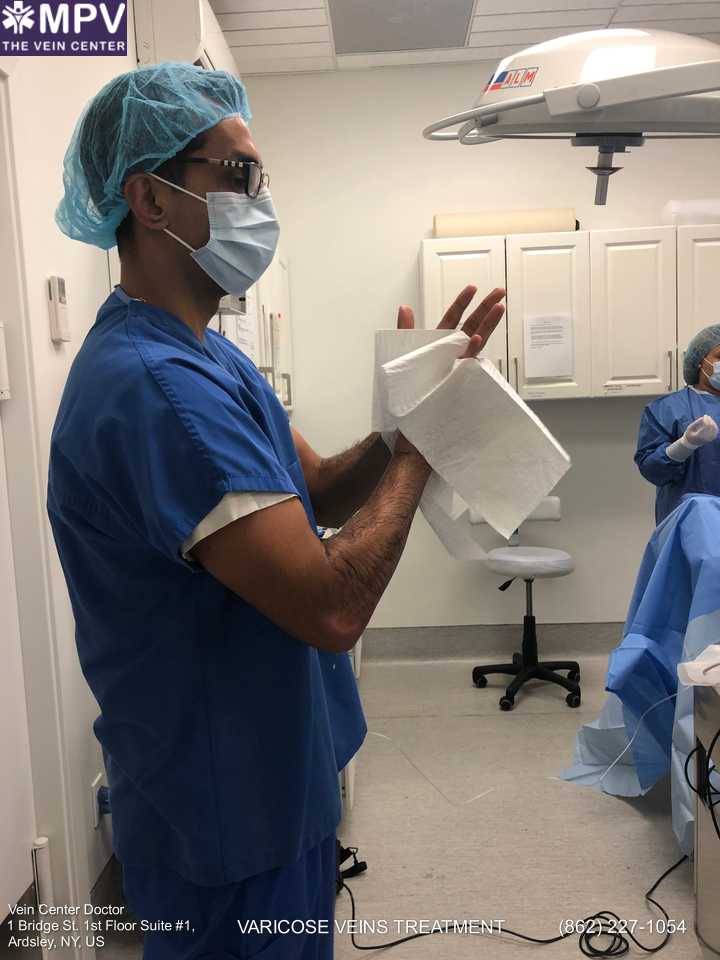The term "telangiectasia," derived from the Greek words "telos" (end), "angio" (vessel), and "ectasia" (dilation), directly describes the condition of dilation at the end of a blood vessel.
Telangiectasia, commonly referred to as spider veins, is a condition characterized by the dilation or swelling of small blood vessels near the surface of the skin. This results in visible red, blue, or purple lines or spider-like patterns becoming noticeable, usually on the face, legs, chest, or arms.
Living with unwanted veins is a thing of the past, when you can simply schedule a free consultation with Vein Center Doctor and find your ideal solution today.
The term "telangiectasia" originates from a combination of Greek words, offering a clear understanding of the condition itself. Here's a breakdown:
When combined, "telangiectasia" literally translates to "dilation of the end of a vessel." This perfectly captures the essence of the condition, which involves tiny blood vessels near the surface of the skin or mucous membranes becoming wider and more visible.

Many people are mainly concerned with the cosmetic effects of telangiectasia and spider veins. The visible red lines and weblike networks can be considered unattractive and something people want to minimize or remove.
However, telangiectasia may also indicate more serious underlying medical conditions in some cases. Certain types of telangiectasia are associated with genetic disorders, connective tissue diseases, and compromised blood circulation.
So while spider veins are often harmless, understanding telangiectasia is important for monitoring your health. Catching dilated blood vessels early provides the opportunity to check for associated conditions and can prompt specialized treatments if necessary.
There are a few different classifications of telangiectasia depending on the appearance, cause, and location of the dilated blood vessels:
The most common variety, these spider veins feature reddish purple lines that spread out and branch off like a spider web. They frequently occur on the legs and face. Spider telangiectasia is often caused by sun damage or aging.
This type appears as dilated capillaries and venules randomly scattered on the skin of the legs. Essential telangiectasia develops gradually for no apparent reason, typically in adults 30-50 years old.
Also called Osler-Weber-Rendu disease, HHT is a rare genetic disorder that causes abnormal blood vessel formation in the skin, mucous membranes, and organs. Recurrent nosebleeds are a common symptom.
This type only affects a particular region of the body unilaterally. It may be present at birth or develop during childhood. The cause is unknown.
A rare neurodegenerative disease that causes progressive loss of muscle control, weakened immune system, and increased risk of cancer. Dilated blood vessels appear early in the eyes and facial area.
The factors that contribute to telangiectasia formation include:
You may be more likely to develop telangiectasia if you have:
| Risk Factor | Description |
| Fair skin | Paler skin is more vulnerable to sun damage and redness from dilated capillaries shows up more easily. |
| Family history | Genetic factors that affect vein health up your risk. Having a parent or sibling with prominent telangiectasia can increase your susceptibility. |
| Venous insufficiency | Varicose veins, poor circulation, blood pooling, and increased pressure on blood vessels encourages spider veins. |
| Rosacea | Facial redness, flushing, visible blood vessels, and acne-like breakouts indicates higher risk of telangiectasia. |
| Vascular Ehlers-Danlos syndrome | An inherited connective tissue disorder that deteriorates blood vessels and leads to telangiectasia. |
| Past radiation therapy | Radiation exposure can injure veins and capillaries, instigating dilation and new telangiectasia. |
| Liver conditions | Diseases like cirrhosis cause increased pressure in the portal vein from the intestines to the liver. |
| CREST syndrome | This autoimmune disease damages connective tissue over time, including blood vessels. |

Your doctor can often diagnose telangiectasia through a simple visual exam of your skin. The noticeable red threadlike lines and spider-like shapes make telangiectasia easy to identify.
Your medical history will also provide clues, especially if you have risk factors like rosacea, family history of spider veins, or past radiation. Mentioning any changes and progression of your telangiectasia can aid diagnosis.
In some cases, your doctor may order additional tests:
Make an appointment with your doctor or dermatologist if you notice any of the following:
These signs can indicate an underlying medical condition requiring further evaluation beyond cosmetic spider vein treatment. Prompt diagnosis is key.
While telangiectasia is mainly a cosmetic concern, treatments are available for improving appearance by reducing the visibility of spider veins.
Common medical procedures include:
The most frequently used treatment, this involves injecting a liquid chemical called a sclerosing agent into the affected veins. The solution irritates and collapses the walls of the vessel, sealing it closed so blood can reroute to healthier veins.
Multiple sessions are usually needed every 4-6 weeks to achieve optimal results. Potential side effects include stinging, cramping, swelling, and discoloration that normally fades within a couple weeks.
Using quick pulses of intense laser light, this treatment heats up blood vessels to destroy them. Laser energy can specifically target the color of hemoglobin in blood cells without damaging surrounding skin.
Lasers work best on tiny spider veins close to the skin’s surface. Larger veins won’t fade as effectively. Discomfort is minimal and side effects like redness and bruising typically clear within 1-2 weeks.
This technology uses broad spectrum light at different wavelengths to selectively heat blood vessels. IPL works by absorbed light converted into heat energy that collapses veins.
Most effective on facial telangiectasia and tiny superficial spider veins. Some minor stinging during treatment can occur. You may experience temporary redness or brown spots that disappear in a few days.
A small probe transmits radiofrequency energy directly into the abnormal vein, causing it to shrink and collapse by heating the vessel walls. The collapsed vein eventually gets reabsorbed into the body.
This method allows the treatment of deeper reticular veins that lasers cannot reach. Side effects are usually limited to temporary bruising that goes away quickly when pressure is applied.
It can be tempting to try getting rid of spider veins yourself, but home remedies are NOT recommended. They will not effectively eliminate existing telangiectasia.
Methods like applying apple cider vinegar, aloe vera, horse chestnut extract, or vitamin E can help mildly reduce the appearance but do not treat the root cause. Some ingredients may irritate the skin.
DIY fixes also carry a high risk of infection since they do not properly sterilize the skin. Leave spider vein treatments to trained professionals for safe, lasting results.
With proper diagnosis and treatment, most people with mild to moderate telangiectasia can achieve substantial improvement in the appearance of spider veins.
However, telangiectasia may not be completely permanent in many cases or new spider veins can emerge over time, requiring maintenance sessions. Severe underlying venous disease makes treatment more difficult.
If left untreated, some telangiectasia may enlarge, darken, or bleed under the skin’s surface. Though usually not dangerous, this can become painful and further impact appearance.

While you cannot always prevent telangiectasia completely, you can reduce your risk of new spider veins developing or worsening with the following methods:
Telangiectasia is characterized by the visible dilation of tiny superficial blood vessels, appearing as spider veins on the skin’s surface. While usually harmless, this cosmetic concern can sometimes indicate more serious health issues.
Knowing your risk factors, promptly treating new spider veins, and taking preventative measures helps manage telangiectasia. Speak to your doctor about the best treatment options to reduce the appearance of dilated blood vessels and improve your skin’s healthy glow.
Find exactly what you need to get rid of your vein-related problems. Dr. Sood and the rest of our team at Vein Center Doctor are ready to help: schedule your free consultation today.
Most Insurance is accepted for treatment